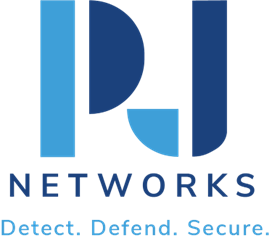The Growing Threat of Ransomware and How to Defend Against It
Advancements in the digital world have paved the way for various opportunities for businesses across the globe. At the same time, the increasing sophistication in the same area is a breeding ground for numerous threats capable of disrupting normal operations and exposing critical data. However, of all the threats, ransomware is among the most notorious, creating havoc for its unfortunate victims. This essay will elaborate on the growth of the ransomware menace and present powerful strategies to protect one’s business.
A Brief Description of the Problem
Ransomware is malware that denies access to a computer system or files containing critical information while demanding a ransom. This menace is often characterized by an attack by cybercriminals on the IT infrastructure of an organization and compromising their files. The ransom is for paying the fee needed to get a key decrypting an infected file. Notably, paying the ransom does not guarantee that the files will be decrypted, which significantly complicates the dilemma faced by the individual or business. Ransomware attacks have threatened to become one of the most dangerous and steadily evolving menaces in recent years. Presently, the ransomware attacks have diversified the ways of attacking and are executed through various forms, from a phishing email to holding with unpatched file access. Accordingly, it has become imperative to pay attention to finding strategies to protect one’s business from ransomware.
Projections for 2024
In 2024, some forecasts will influence the ransomware threat:
- Double Extortion: Data exfiltration and encryption. They further exacerbate the pressure by threatening to release or auction sensitive data if a ransom is not paid.
- Advanced Encryption Methods: The attackers are now using sophisticated encryption algorithms which making it very hard, if not practically impossible to decrypt the files without the decryption key.
These trends can help organizations to identify the need for meaningful change in order to solidify any flanks open to or breached by ransomware.
Robust Security Measures
Prevention is still the best approach when it comes to combatting ransomware. We need to have several defense mechanisms that businesses can put in place and today we will detail those.
- Employee Training: Properly training employees on how to identify phishing and other potential signs of compromise can greatly minimize the risk of ransomware incidents. Routine security-awareness training sessions keep the organization vigilant about security culture.
- Advanced Network Security Solutions: The implementation of best-in-class security apparatusions such as Fortinet ransomware defense will provide a rogue access and stop malicious software from infiltrating your network. These consist of firewalls, invasion detection techniques (ideas) and actual time threat investigation.
- Frequent Data Backups and Recovery Plans: You can reduce the effect of a ransomware attack by frequently backing up your data, and adhering to an effective recovery plan. Best practice also comes down to storing backups offline, out of the control of the primary data center for restoration in a response scenario.
- Patch Management: Patching your systems to make sure no vulnerabilities ransomware might take advantage of The discipline of automated patch management can ensure this process happens smoothly.
- Enforce Zero Trust Architecture: This method restricts access to IT resources easily approachable on device authentication which could help minimize the attack boundaries and restrain ransomware propagation across the network-stream.
Ransomware Attack Incident Response
Ransomware can infect all systems, even the strongest defense of a victim. This is where a solid incident response plan by a key player comes into play for any potential attack:
- Rapid Isolation: As soon as the attack has been identified, disconnect vulnerable systems from your network to prevent the ransomware from infecting other devices.
- Internal and External Communication: Organizing clear communication to both internal teams as well as external partners can help contain the impact of an incident and coordinate a response. Stakeholders demand Transparency to Uphold Trust
- Forensic Analysis: A comprehensive analysis on determining the root and depth of the breach which inturn helps for future prevention.
- Restore from Backups: With the use of offline backups, an organization can restore systems to your previous state and not have to pay a ransom at all.
- Post-Incident Review and Iteration: Understanding the incident after recovery can lead to mitigation points that need forked. By providing this feedback and using analytics, a continuous security cycle should improve measures for further incidents to come.
Today, businesses must be proactive in their cybersecurity to survive the ransomware threat landscape. Whether you have high expectations for an IT-driven recovery solution or simply employ (hopefully avoidable) customer training techniques, integrating the two will provide a more protected environment with significantly less bandwidth for ransoming. By keeping an eye on ransomware trends and putting strong defenses in place, companies will be much more resilient against these cyberattacks.
Ransomware continues to be a plague in the digital world. Once businesses know of the threat that faces them, they can start to protect themselves since they understand how dangerous it is, staking their operations and data securely away from potential threats while turning what could have been disaster into savings by not having created an opportunity for adversary business practices ruining a reputation which — due to PR response we have established as a brinkle barrier in front of clients.
